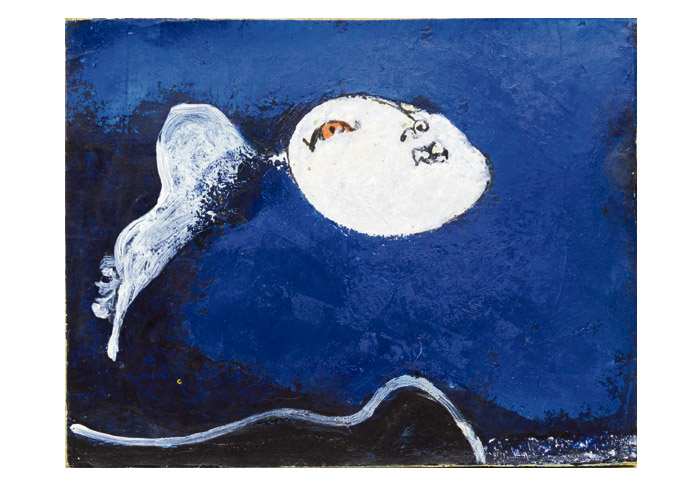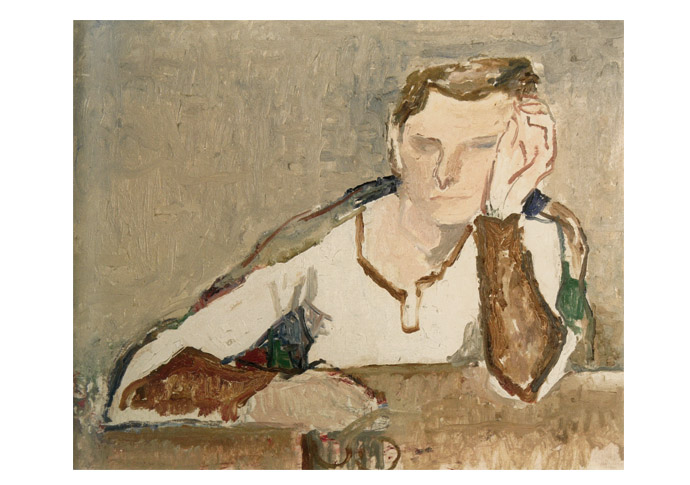Metamorphoses
Osvaldo Licini was an artist who could change direction, as John Evans sees
Thursday, 15th June 2023 — By John Evans

Rebellious Angel on Dark Red Background, Angelo ribelle su fondo rosso scuro, 1946, oil on canvas, 72.5 x 91.5cm Galleria d’Arte Contemporanea ‘Osvaldo Licini’, Ascoli Piceno
THE idiosyncratic art of Osvaldo Licini is strikingly obvious from the 50 or so pieces in the first UK show dedicated to his work.
Yet there are discernible phases and clear signs of when and how Licini (1894-1958) would reinvent himself during his career. The title of the show at the Estorick Collection of Modern Italian Art in Canonbury, Osvaldo Licini: Rebellious Angel refers directly to one of the characters to be found in some later works.
Born in the Marche region of Italy, in 1908 he attended Bologna’s fine arts academy, where he was friendly with Giorgio Morandi, a fellow pupil, and flirted with Futurism, with some early works in the town’s Grand Hotel Baglioni in 1914.
In a show catalogue, the Estorick’s director Dr Roberta Cremoncini notes, “…although their work would later evolve in very different directions, the two artists initially had much in common, their imagery being indebted to the landscapes of Cezanne and Matisse. Licini is undoubtedly a lesser-known figure than Morandi – particularly in this country – yet his imagery is equally fascinating…”

Amalassunta with Yellow Eye, Amalassunta occhio giallo, 1947, oil on paper affixed to canvas 20.9 x 26.5cm, Augusto and Francesca Giovanardi Collection, Milan
Licini would begin sculpture studies in Florence. But then he was called up for war service, wounded, and invalided out of the army in late 1915 and convalesced in Paris. Between 1917 and 1926 he divided his time between France and Italy, to which he returned to establish himself as a painter of portraits and landscapes. In Paris he exhibited and became friends with Amedeo Modigliani.
Examples of works from the mid-1920s here include a two nude studies, one clearly showing the influence of Modigliani, landscapes, the strongest of which is a snow scene, a simple seascape and, notably, Portrait of Nanny from 1926 (Licini’s wife Nanny Hellström).
Then there is a metamorphosis and from 1931 we have examples of the artist’s geometric abstraction, such as Rhythm: Abstract Designs on White Background from 1931-2 and Castle in the Air also from1932 but reworked in 1936 after it was vandalised.

Portrait of Nanny, Ritratto di Nanny, 1926, oil on canvas, 62.5 x 75.6cm Galleria d’Arte Contemporanea ‘Osvaldo Licini’, Ascoli Piceno
Licini at this time explained his philosophy in the following way: “Painting is the art of freely-conceived colours and forms, it is also a wilful act of creation and, unlike architecture, it is an irrational art, in which fantasy and imagination – that is to say poetry – predominate.”
During World War II he withdrew to his home town of Monte Vidon Corrado and altered the focus of his work again, turning to more exuberant and imaginative themes.
This show, curated by Mattia Patti, associate professor at Pisa university, features key loans from Milan’s Augusto and Francesca Giovanardi Collection.
The professor says the 1940s saw Licini produce “cycles of works depicting fantastical figures”, among them “Rebellious Angels” and “Amalassunta” (of which he said “she is our beautiful Moon, silver for all eternity”) and through which he would attempt to explore female sensuality.
Having served two terms as mayor of his home town, Licini died suddenly in 1958. Earlier that year he had gained great recognition, having been awarded the grand prize for painting at the Venice Biennale, at which Amalassunta played a part.
• Osvaldo Licini: Rebellious Angel runs at the Estorick Collection, Canonbury Square, N1 2AN till September 10. estorickcollection.com